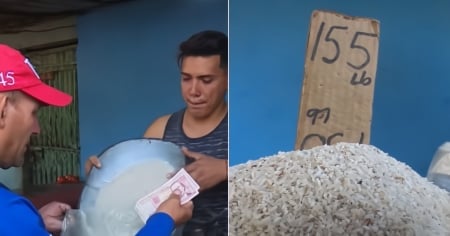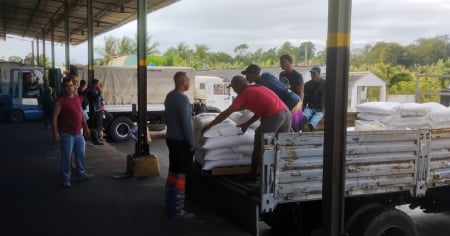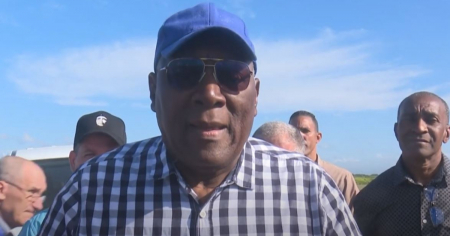The Ministry of Domestic Trade (Mincin) confirmed the arrival of a ship carrying rice at the port of Havana and stated that it has activated a new distribution operation to alleviate the delays accumulated in the delivery of the regulated family basket for the months of December, January, and February.
Marpessa Portal de-Villiers, General Director of Merchandise Sales at Mincin, stated to the official press that the amount of grain being unloaded ensures the outstanding deliveries for December—in the areas where they have not yet been completed—the total distribution for January, and partially for February.
"This process will extend throughout the remaining days of February and into March," the official emphasized.
In the case of Havana, distribution will be carried out directly to warehouses and wholesale establishments. The cycle to acquire the product will be 30 days from its arrival at the stores, and in areas that receive donations, the population will not have to pay the same price for rice.
Rosa María Rizo Constanten, vice president of the Food Group of Mincin, reported that once the unloading in Havana is completed, the ship will depart for the port of Cienfuegos to supply the provinces of Sancti Spíritus, Villa Clara, Cienfuegos, and Ciego de Ávila.
Similar operations are being carried out in Santiago de Cuba to secure the rice needed in the eastern provinces, and later at the port of Nuevitas in Camagüey.
Promises of the regime against the reality of the market
The announcement comes amid growing frustration among the population over food shortages and the chronic lack of basic goods.
This week, Beatriz Johnson Urrutia, the secretary of the Communist Party of Cuba (PCC) in Santiago, announced on Facebook the distribution of 14 pounds of rice for the family basket, and her post went viral, garnering over 2,500 comments and being shared more than 700 times in just a few hours.
In Camagüey, the decision by the Provincial Administration Council to set a price cap of 155 Cuban pesos for a pound of rice resulted in a massive closure of sales stands in the Hatibonico market.
The sellers, supported by representatives from cooperatives, refused to market the product at that price, claiming it does not cover costs. In the black market, the price per pound reaches 250 pesos, highlighting the gap between official measures and the country's economic reality.
The administrator of the Hatibonico market warned that representatives of the closed points of sale will be summoned to determine whether they actually have inventory. The government has threatened to impose sanctions on those who refuse to sell rice at the price set by the authorities.
The arrival of this shipment in Havana may represent a temporary relief for thousands of Cuban families, but the instability in distribution and the conflicts arising from price controls continue to shape the daily lives of the population, which is facing one of the most severe food crises in recent decades.
Frequently Asked Questions about Rice Distribution in Cuba
What measures is the Cuban government taking to address the rice shortage?
The Cuban government is implementing rice distribution operations from the ports to the provinces that are most in need in order to complete the delayed deliveries of the basic food basket. However, these measures are deemed insufficient by the population, as they do not address the underlying causes of the shortage, such as the lack of local production and logistical difficulties.
Why have rice deliveries in Cuba been delayed?
Delays in rice deliveries in Cuba are due to logistical issues, a shortage of financial resources, and reliance on imports. These factors have led to the basic basket not being distributed in a timely manner, affecting thousands of families who depend on these essential products.
How does the price control of rice affect the market in Cuba?
The price control of rice has led to the closure of sales outlets and conflicts between sellers and authorities. In Camagüey, for example, vendors have refused to sell rice at the price set by the government, arguing that it does not cover costs, which has increased scarcity and dissatisfaction among the population.
What is the situation of the black market for rice in Cuba?
The black market for rice in Cuba is thriving due to the shortage in state distribution. The price for a pound of rice in the informal market reaches exorbitant levels that are unaffordable for many families, reflecting the government's inability to control speculation and ensure an adequate supply of this staple food.
Filed under:





